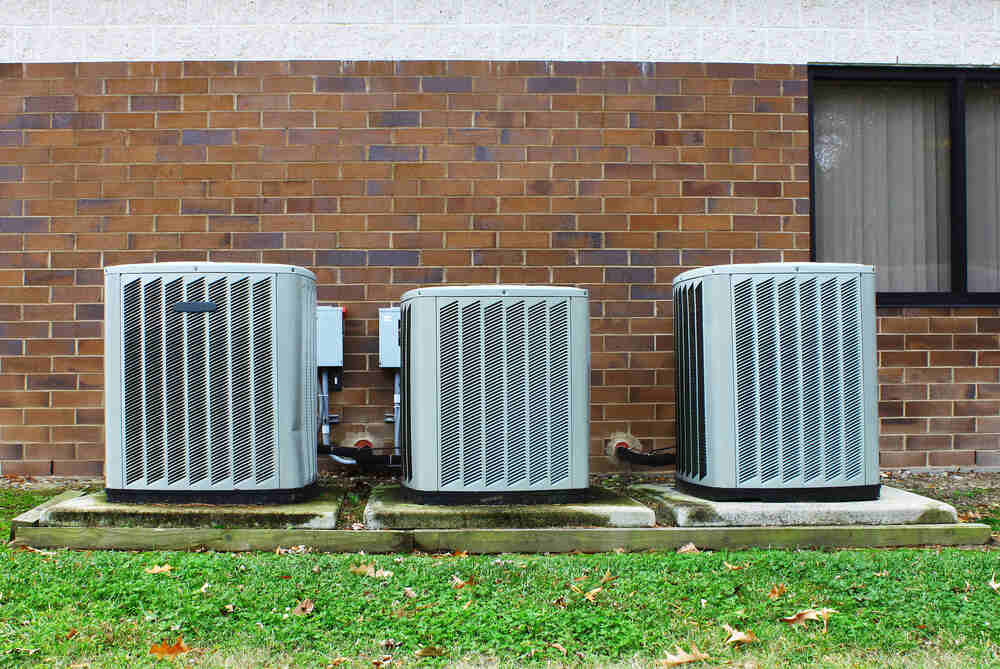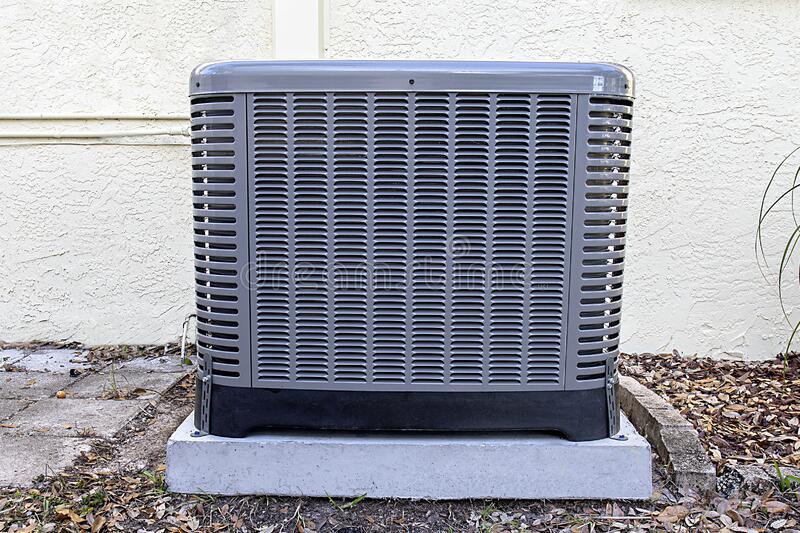Updated 3/14/24
AC Condenser Pads: Everything You Need to Know About Protecting Your Outdoor AC Unit in Napa and Sonoma Counties
If your air conditioning system is any larger than a simple ductless window unit, it’s quite likely that part of the system is outside your home. Both the indoor and the outdoor components play a vital role in cooling the air and keeping it flowing through your house, so it’s important to protect both units from damage.
While protecting the indoor unit is relatively easy since it’s inside your home, the outside unit, known as the condenser, is more vulnerable, especially in harsh weather during the winter or summer. And failing to provide sufficient protection for your outdoor unit can create some real problems for you down the road.
The good news is that there are several things you can do to keep your outdoor AC unit safe and secure for years to come. This includes steps you can take during installation, such as adding a condenser pad.
What is an AC Condenser Pad?
One of the first things you should install when you’re setting up your AC system is a condenser pad.
In fact, this is the single most important thing you can do to protect your unit, primarily because of the chemical reactions going on inside the outside unit of your air conditioner. And this is true for several reasons.
First, having an AC unit sitting flat on the ground allows it to be exposed to a number of potential risks, including rainwater pooling around the unit, and being subjected to corrosion from the soil underneath. However, simply raising the unit off the concrete or ground helps protect it from these issues.
Second, because the compressor and condenser coils hold refrigerants in a liquid state, it’s important that the unit be kept still and level while it’s operating. Even if the ground under the unit is relatively flat, the weight of the unit can cause the soil underneath to shift or compact unevenly. This can result in an AC unit becoming unbalanced and cause problems with the system.
The simplest way to avoid these problems is by installing a condenser pad when you’re first installing the unit.
A condenser pad is simply a flat, rectangular slab, usually made of concrete, for the AC unit to be placed on. This stable pad keeps the unit elevated and safe from corrosion and water damage while also making sure it remains level.
Even if you upgrade to a different AC system later, you can still just use the same pad as long as it’s large enough for the footprint of your new unit. Here are a few things to keep in mind when choosing the right condenser pad for your property.

AC Condenser Pad Size
Choosing the right size for your condenser pad is important and is mostly based on the size of your unit. However, you should also consider the elevation from the ground when making your decision. Typically, the top surface of a condenser pad should be at least three inches off the ground, but you might want to make it a little higher if you live somewhere in the North Bay that gets a lot of rain or is prone to minor flooding.
Ensure that the pad is big enough to fit the unit with plenty of space around. Keep in mind that you may want to re-use the same pad if you get a bigger unit, so leaving a little extra room to grow is a good idea as well. But keep in mind that an especially large pad might shift or sink into the ground if the soil is too loose, so make sure you have a conversation with your HVAC contractor to figure out the best size and location for your condenser pad.
Pad Material
While condenser pads have traditionally been made of concrete, you now have a few different options for materials. If you have a large or heavy unit, concrete is a good choice. While it’s not the most aesthetically pleasing material, concrete is more than strong enough to hold even the heaviest AC units. It might cost a little more up front, but the pad will most likely last for decades without any issues.
You can also purchase condenser pads made of recycled plastic or rubber composite. These composite pads are easier to move and install and will still last just as long as concrete if they’re installed correctly. However, heavier AC units can be too much for composite pads, which will mean staying with a concrete pad option.
AC Condenser Pad Location
Generally, condenser units are placed at the back or side of a house, to minimize the noise inside. Once you’ve chosen the best location for your unit, you’ll want to install the pad. You’ll first have to level the ground underneath and, while this is essential for concrete pads, it is especially important for composite pads, which are lightweight and sit on top of the ground.
Once the system has been installed and you notice the ground underneath your pad has shifted, or if the unit seems unlevel, don’t try to fix it by yourself. AC units are extremely heavy, as are the concrete pads underneath. Bring in professional help to evaluate the situation and make repairs.
Considering a Vibration Pad for Your AC Unit
A well-placed condenser pad will protect your AC unit from most things, but there’s still one more component that can add extra stability.
Because of the large fans and motors inside an AC unit, they tend to shake and vibrate when they’re running. This is normal, but it can cause problems years down the road as the metal housing rubs against the condenser pad. In addition, this vibration can generate noise, which can be disturbing.
To avoid this situation, simply add a vibration pad under each of the four corners of the AC unit. This will prevent any grinding on the concrete as well as muffling the noise from vibration. If you install vibration pads, however, be sure to keep the unit level.
Weatherproofing Your Outdoor AC Unit
AC condensers are built to survive harsh outdoor conditions. However, there are still some steps you can take to help extend the life of your condenser. A condenser pad, for example, will go a long way towards protecting the unit from potential hazards from the ground, but exposure to the elements and severe weather can still cause damage. And this is true even in a relatively mild environment like Sonoma or Napa County.
Here are a few things to keep in mind when you’re installing and maintaining an outdoor AC unit:
Allow for Shade
Generally, everybody wants to install an outdoor unit somewhere tucked away at the back of the house where it can’t be seen. However, when deciding where to place the air conditioner, you should also look for areas with shade.
UV radiation from the sun can damage even the toughest machines over time. While it does not hurt the metal itself, prolonged exposure to UV light can accelerate the start of rust. And any other material attached to your AC unit can be affected by direct exposure to sunlight.
In addition, having your unit in shade can mean more efficient operation. Sitting in direct sunlight will cause the unit to heat up and have to work harder to cool the refrigerant in the condenser and the compressor coil.
Give It Some Space
While it’s tempting to tuck the condenser away in a corner of your home, a tight space makes maintaining the unit more difficult. Leave enough room for an HVAC technician to get in and disassemble the unit if necessary. In addition, the condenser itself also needs a little room to “breathe”. If the unit is expelling hot air directly into a wall or other obstruction, the air will come back and warm the condenser itself. The warm air needs to have sufficient space to dissipate.
Keep Your Plants Trimmed
Using plants or shrubs to hide the AC unit is a great way to keep your yard looking nice. However, you should be careful not to let those plants become overgrown. Dead leaves and branches, or vines growing on or inside the unit can damage it.
While plants can be a great way to provide shade for the air conditioner, be sure to keep some distance between the plants and the AC unit. One method is to create a gravel strip around the condenser pad. This also prevents grass and weeds from springing up too close to the unit.
When you’re mowing your lawn, avoid letting the mower throw mud, dirt, and lawn trimmings into the unit. You should also take extra care to avoid driving the mower over any rocks in the grass. They can dent or damage the AC unit as well.
Cover the AC Unit for Winter
As the weather gets cold and you’re no longer using your air conditioning, cover the condenser unit to keep it safe from debris until the spring. This makes it significantly easier to clean when the warm months return. However, be sure to use a proper cover.
One common mistake is to cover the condenser with a weatherproof tarp. While that will keep debris out, it also keeps moisture in. Under the tarp, moisture from condensation will be trapped inside the unit, gathering on the coils, screws, and electrical wiring. This can allow rust to form, and possibly lead to parts failing. Instead of a tarp, use a proper air conditioning cover from a hardware store.
Pro tip: Something HVAC professionals have been doing for years to protect their own condenser units is to simply cut a piece of plywood, place it on top of the unit, and hold it down with a couple of bricks. It’s quick, easy, and allows air to flow through the condenser while protecting it from falling debris.
Maintaining Your AC Unit: DIY Tips for Sonoma and Napa County Residents
Regular cleaning and maintenance is vital if you want to keep your air conditioning system running for years to come. As a general rule, it’s recommended that you give both parts of a split-system air conditioner a good cleaning twice a year – once in the spring before you turn it on for the first time, and once in the fall before turning it off.
Here are a few things you should make sure to do every time you open up the AC unit:
- Check the filter – The inside air conditioning unit has a filter that purifies the air it pulls in before blowing it across the evaporator coil. It’s recommended that you check the filters once a month during the cooling season, or twice a month if you have pets that shed. How often you have to replace the filter will depend on the model, so pay attention to the packaging whenever you buy a new one.
- Clean the coils – Both the evaporator and condenser coils gather dust and dirt as the air conditioner runs. A clean filter will go a long way towards keeping the evaporator coil clean, but it still needs to be wiped down every time you do your yearly maintenance.
- Check the coil fins – The coils inside your AC unit are covered in thin aluminum fins that can block airflow if they’re bent. We recommend buying a common HVAC tool called a “fin comb” that can easily bend the fins back into proper shape.
In addition to regular cleaning twice a year, your AC system will sometimes require professional maintenance to check the refrigerant, measure the airflow, test the thermostat, and otherwise inspect every part of the system.
If you’ve noticed any problems with your air conditioner, give Valley Comfort Heating & Air a call at (707) 539-4533 and our licensed HVAC professionals will take care of it for you.



